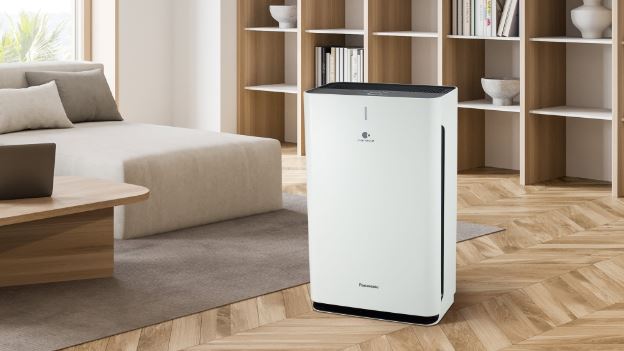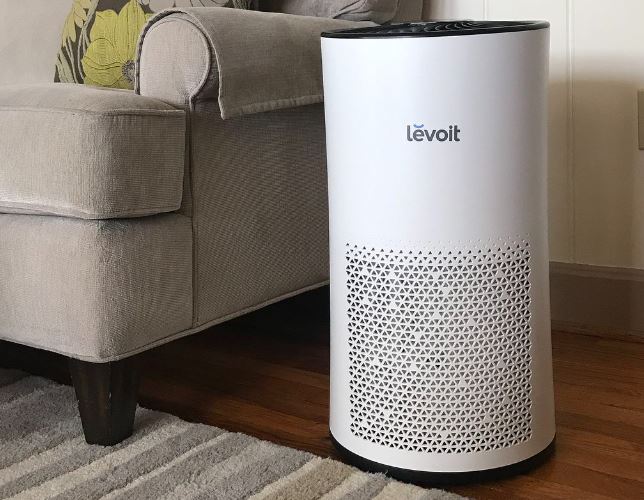Best Air Purifiers for Pet Owners: Eliminating Pet Dander and Odor
Best Air Purifiers for Pet Owners: Eliminating Pet Dander and Odor
Blog Article
In an era of heightened health awareness, the air we breathe in has become a prominent focus for many people. With rising pollution levels and a better understanding of the effects of indoor pollutants on our health, it's no surprise that the air purifier market is booming.
Air purifiers are machines that clean the air of pollutants in a space, improving indoor air quality. They are particularly beneficial for individuals suffering from allergies, asthma, and respiratory conditions as they can significantly reduce the levels of allergens, pollutants, and irritants in the air. Even healthy individuals can rely on the added protection of air purifiers, as they offer peace of mind and an extra layer of protection against airborne illnesses.
This article will dive deep into the world of air purifiers, exploring their benefits, the different types available, essential factors when choosing a purifier, and how to get the most out of your device. By the end, you should have a solid comprehension of air purifiers and be able to decide confidently about whether investing in one is the right choice for you and your family.

Unraveling Indoor Air Contaminants and Their Impact on Health
To appreciate the value of air purifiers, it's essential to grasp the variety of contaminants they address and the possible effects of prolonged exposure.
Indoor air pollutants can be generally classified into three primary types:
- Particulate Matter: This includes solid and liquid droplets present in the air. Examples include dust, smoke, pollen, pet dander, mold spores, and more. Particulate matter can lead to respiratory complications and set off allergic responses.
- VOCs: A Concern for Indoor Air: VOCs are gases released by solids and liquids. Sources of VOCs include cleaning agents, paints, aerosol sprays, pesticides, and similar products. Exposure to VOCs can lead to eye, nose, throat irritation, headaches, and stomach discomfort.
- Understanding Biological Contaminants: These include microbes such as bacteria, viruses, mold spores, and mildew. They can cause a variety of health problems, from minor allergies to serious infections.
The consequences of exposure on human health can vary significantly. For individuals with respiratory conditions or compromised immune systems, exposure to indoor air pollutants can lead to severe complications. Even for healthy people, chronic exposure to certain pollutants can impact respiratory health and overall well-being over time.

Unraveling Air Purification Technology
Air purifiers use a variety of physical and chemical processes to capture and remove pollutants from the air. Understanding the fundamental processes employed by purifiers will help you understand their efficiency and the variety of options on the market.
Here are the core processes and cutting-edge technologies used in air purifiers:
- The Power of Mechanical Filtration: This is the most widely used approach used in air purifiers. It involves using filters designed to trap airborne particles as air is drawn into the purifier. The filtration media varies, each designed to trap particular particle types. For example:
- Pre-filters: These are usually the first line of attack, trapping bigger contaminants like dust, hair, and similar larger particles.
- HEPA Filtration: Unparalleled Performance: HEPA filters are remarkably proficient at capturing microscopic particles, including pollen, dust mites, and some bacteria and viruses. To be labeled a bona fide HEPA filter, it must trap a minimum of 99.97% of particles down to 0.3 microns in size.
- charcoal filtration: These filters are designed to effectively remove odors, VOCs, and gaseous compounds.
- Ionizers: Charging Ahead: Ionizers use electrical charges to create ions with a negative charge, which bind to particles in the air. The charged particles are drawn to nearby surfaces or the purifier itself.
- Ozone: A Powerful Purifier: Some air purifiers use ozone as a powerful cleaning agent. While effective, ozone is a respiratory irritant so these types of purifiers should be used with moderation and in well-ventilated areas.
- Ultraviolet (UV) Light: UV light can be used to destroy biological contaminants like bacteria, viruses, and mold spores. UV light is commonly paired with filtration to trap particles, and UV light provides an extra layer of protection against biological hazards.
Selecting the Perfect Purifier
With a plethora of options available, selecting the perfect purifier can be a challenging endeavor. It's important to consider a range of criteria to ensure you make the right choice for your specific needs and space.
Here are some key considerations:
- Room Size: Air purifiers are typically designed for specific areas, so it's important to choose a model that can effectively handle the square footage of the room. Most purifiers will list a maximum room size or a Clean Air Delivery Rate (CADR), which indicates the volume of filtered air delivered per minute.
- Type of Contaminants: Identify the particular contaminants you want to target. If you suffer from allergies, look for a purifier with a true HEPA filter. For reducing unwanted smells, consider a model with a activated carbon filter. If you're concerned about pathogenic microorganisms, a purifier with UV-C light might be best.
- Noise Level: Air purifiers can produce a range of noise outputs, so if you plan to use it in a bedroom or quiet space, look for models with a low-noise or sleep mode.
- Maintaining Performance: Consider the ongoing costs and maintenance requirements of the purifier. HEPA filters, for example, typically need to be replaced every 6-12 months, depending on use and environmental factors. Remember to budget for filter replacements when making your choice.
- Enhancing Your Experience: Many purifiers offer innovative smart capabilities like automatic modes, air quality monitoring, and wireless control, allowing remote control and monitoring. These features can enhance the convenience and effectiveness of your purifier.
Optimizing Performance of Your Air Purifier
Once you've chosen and set up your air purifier, there are several things you can do to ensure it operates at peak performance and delivers the greatest advantages:
- Place it in the Right Location: Position your purifier in an unobstructed area, avoiding walls and furniture, to ensure efficient air circulation. Avoid placing it near external openings as drafts can disrupt the purifier's effectiveness.
- Round-the-clock Operation: For the best results, it's recommended to run your purifier around the clock. Many models have low-energy settings or automatic modes that respond to air quality changes, so you can maintain clean air without running up a huge energy bill.
- Maintain the Filters: Regularly follow the manufacturer's filter replacement guidelines. Over time, filters become saturated with particles, affecting efficiency. Mark the date of replacement on your calendar so you don't forget.
- Limiting Indoor Pollutants: Alongside using an air purifier, take steps to minimize indoor air pollutants. This could include vacuuming, dusting, choosing natural cleaning alternatives, and limiting aerosol and chemical products. Report this page